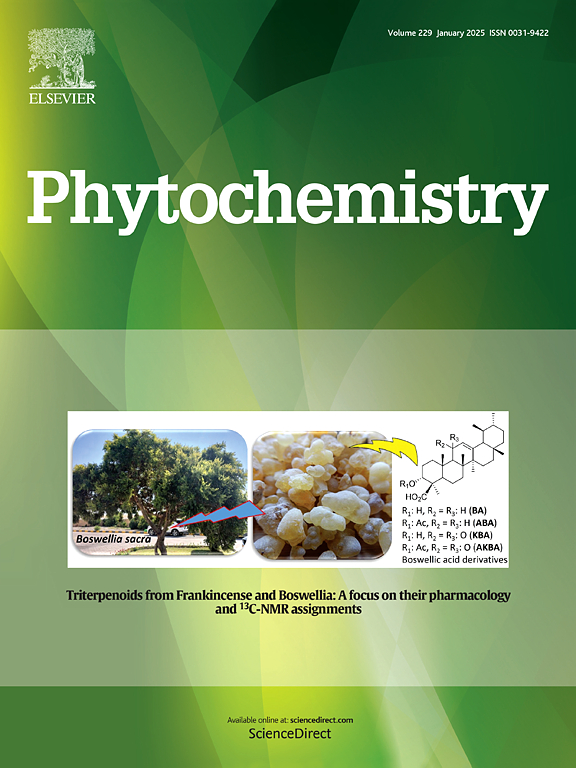Phenolic compounds with anti-neuroinflammatory activities from the heartwood of Caesalpinia sappan L. (Sappan Lignum)
IF 3.4
2区 生物学
Q2 BIOCHEMISTRY & MOLECULAR BIOLOGY
引用次数: 0
Abstract
Caesappanols G−Q (1−11), eleven undescribed phenolic compounds, including seven homoisoflavans and derivatives (1−7), two protosappanins (8−9), one phenylacylphenol (10), and one chalcone (11), along with nine known compounds (12−20), were isolated from Sappan Lignum, the heartwood of Caesalpinia sappan L. Structural elucidation of these compounds was accomplished through a combination of 1D and 2D NMR spectroscopy, mass spectrometry, NMR calculations, and ECD calculations. Furthermore, the anti-neuroinflammatory potential of these compounds was assessed by measuring their ability to inhibit NO production. All isolated compounds exhibited inhibitory effects on NO production in LPS-induced BV-2 cells. Among them, compounds 18, 19, and 20 demonstrated the most potent activity, with IC50 values of 19.63, 15.84, and 11.01 μM, respectively.

杉木心材中具有抗神经炎活性的酚类化合物
从杉木(Caesalpinia Sappan L.)的心材Sappan Lignum中分离得到了Caesappanols G−Q(1−11)、11种未描述的酚类化合物,包括7种同型异黄酮及其衍生物(1−7)、2种原杉木苷(8−9)、1种苯酰基酚(10)和1种查尔酮(11),以及9种已知化合物(12−20)。这些化合物的结构解析通过1D和2D NMR波谱、质谱、NMR计算和ECD计算完成。此外,通过测量其抑制NO生成的能力来评估这些化合物的抗神经炎潜力。所有分离的化合物对lps诱导的BV-2细胞产生NO均有抑制作用。其中化合物18、19和20的IC50值分别为19.63、15.84和11.01 μM,活性最强。
本文章由计算机程序翻译,如有差异,请以英文原文为准。
求助全文
约1分钟内获得全文
求助全文
来源期刊

Phytochemistry
生物-植物科学
CiteScore
6.40
自引率
7.90%
发文量
443
审稿时长
39 days
期刊介绍:
Phytochemistry is a leading international journal publishing studies of plant chemistry, biochemistry, molecular biology and genetics, structure and bioactivities of phytochemicals, including ''-omics'' and bioinformatics/computational biology approaches. Phytochemistry is a primary source for papers dealing with phytochemicals, especially reports concerning their biosynthesis, regulation, and biological properties both in planta and as bioactive principles. Articles are published online as soon as possible as Articles-in-Press and in 12 volumes per year. Occasional topic-focussed special issues are published composed of papers from invited authors.
 求助内容:
求助内容: 应助结果提醒方式:
应助结果提醒方式:


